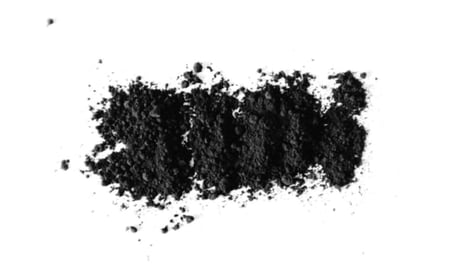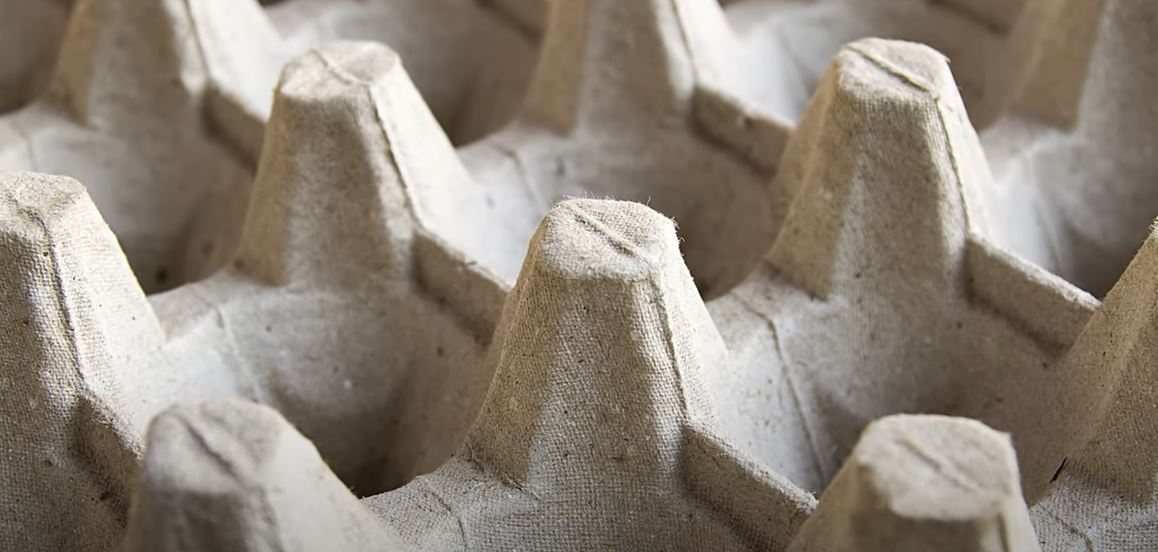Molded Pulp Fiber: How Filler Minerals Affect Woven Wire Mesh Molds
Molded pulp fiber packaging has grown in popularity as we shift towards a more green lifestyle. From the to-go boxes we receive from restaurants to the cup holders we get when on a coffee run, molded pulp fiber is slowly becoming integrated into our everyday lives.
As the number of consumer hands that the product gets placed into continues to increase dramatically, manufacturers are forced to improve the quality of their products to keep up with customer standards. As a result, they are experimenting with a different method to improve the quality of their pulp prior to being molded.
A trend we are beginning to see gain traction is the use of various minerals that can be used to ensure the final product delivers functionality and visual benefits. But as molding pulp and fiber relies on fine woven wire mesh screens to properly form the pulp, how does adding these minerals affect the performance of your woven wire mesh molds?
W.S. Tyler has helped customers weave wire mesh into their facility for 150 years, striving to help remove the roadblocks that prevent innovation.
To help make sense of how the minerals used to improve molded pulp fiber packaging will affect your process, the following will cover:
- The benefits mineral can bring when forming molded pulp fiber packaging
- What minerals you can use to improve the quality of your molded pulp fiber packaging
- How minerals will affect the way you form molded pulp fiber
- How minerals will affect the performance of your woven wire mesh molds
Why Use Minerals When Forming Molded Pulp Fiber Packaging?
There are several factors that are used to determine the quality and value of molded pulp fiber packaging. Industry demand is geared towards products with adequate strength, desirable functionality, a smooth surface, and visual elements.
All while remaining cost-effective and eco-friendly.
Molded pulp fiber manufacturers incorporate various mineral fillers to ensure desirable efficiency without sacrificing quality. When used properly, these minerals can promote high throughput, reduce sticking, improve interaction with chemicals, as well as minimize pitch and stickies.
This ultimately translates to a reduced amount of energy needed to produce molded pulp fiber packaging.
What Minerals Are Used When Forming Molded Pulp Fiber Packaging?

There are four minerals that are used throughout the molded pulp fiber industry to improve efficiency when forming molded pulp fiber packaging. These minerals include calcium carbonate, kaolin, bentonite, and talc.
Calcium Carbonates
Standing as one of the most widely used minerals, calcium carbonates refer to either limestone, chalk, or marble. Manufacturers often turn to these minerals when fillers are needed to reduce the amount of fiber fed to the molds.
Calcium carbonate can also be used to create a bright, white finish.
Kaolin
Kaolin is a mineral that has been tried and true for over 100 years. Often called china clay, kaolin works to generate a smooth, white finish.
This, in turn, helps create a surface that is easy to print on. This includes improving your ability to laser mark the surface of the molded pulp fiber packaging effectively.
Bentonite
Bentonite naturally exists in volcanic ash and is made up of particles with a large surface area. Manufacturers typically implement bentonite to manage increased amounts of pitch and stickers in pulp.
Talc
The softest mineral on earth, talc is primarily used to reduce friction during the forming, ensuring maximum efficiency. Additionally, it works to create a surface that can be printed on effectively.
Like bentonite, talc can be used to make pulp with high pitch levels more manageable. This is particularly beneficial when wood and waste paper are used to produce pulp.
How Do Mineral Fillers Affect How You Mold Pulp Fiber Packaging?
No matter what your molded pulp fiber process looks like, moisture is a concern. Increased moisture can hinder your ability to properly mold the pulp and increases the amount of energy needed to dry the pulp once molded.
Fortunately, the minerals listed above can enhance the dewatering capabilities of your operation.
For example, if your pulp is made up of 3% calcium carbonate, you can potentially see a substantial decrease in drainage time. This is done without having a noticeable effect on the burst strength.
But what's causing such an improved drainage time?
Well, it's because the calcium carbonate also works to lower the amount of moisture in the pulp itself. Naturally, as more minerals are added, the lower the moisture content becomes.
Now that the moisture levels are down, you can then rely on minerals, such as talc and kaolin, to improve the dry content once molded. This makes it easier to detach the molded pulp fiber from the molds without causing blemishes or faults.
NOTE: While the minerals discussed in this article will improve your process, it should be known that they will alter the density of the final product.
How Do Mineral Fillers Affect the Performance of Your Wire Mesh Molds?
When applied within the molded pulp fiber industry, woven wire mesh is applied as screening media within the molding system. Its core function is to distribute the vacuum, pressure, and heat uniformly when your pulp is being pressed.
You can only achieve peak performance when the pore openings are free of pulp accumulation. This leaves you with the task of creating a pulp mixture that doesn't stick to the mesh easily.
Now, the main reason why your pulp may clog the openings of your is that there is a high level of pitch and stickies. Things such as resins, glues, waxes, etc., can all source the pitch and stickies in pulp, especially when working with recycled waste paper.
Failure to address the stickies and pitch in your pulp can cause an increased amount of time cleaning your mesh screen, negatively impacting the quality of the molded products and irregular dewatering.
Minerals, such as talc and bentonite, can be added to manage stickies and pitch. Again, they can be added without losing drainage performance or hindering burst performance.
Select a Mesh Count That Compliments the Characteristics of Your Pulp
As molded pulp fiber packaging continues to grow in popularity, the use of minerals in the industry will follow suit. Currently, calcium carbonates, kaolin, bentonite, and talc, are all widely used to manage the drainage capability as well as the moisture, pitch, and stickies content of the pulp mixtures used to form the molded pulp fiber products used today.
But let's say you incorporate one of the several minerals, and you're still struggling to achieve the quality you and, more importantly, your customers come to expect. Well, adding minerals may not have been the right solution, and you should direct your attention to other elements of your process, such as the mesh count of your woven wire mesh molds.
With over 150 years of woven wire mesh experience, W.S. Tyler is dedicated to learning your process inside and out so we can work together and build your confidence in the products you make.
For more information regarding the mesh count(s) that may help improve your process, read the following article:
About Ronnie Brown
Ronnie is the Content Writer for W.S. Tyler and has four years of experience as a professional writer. He strives to expand his knowledge on all things particle analysis and woven wire mesh to leverage his exceptional writing and graphic design skills, creating a one-of-a-kind experience for customers.



